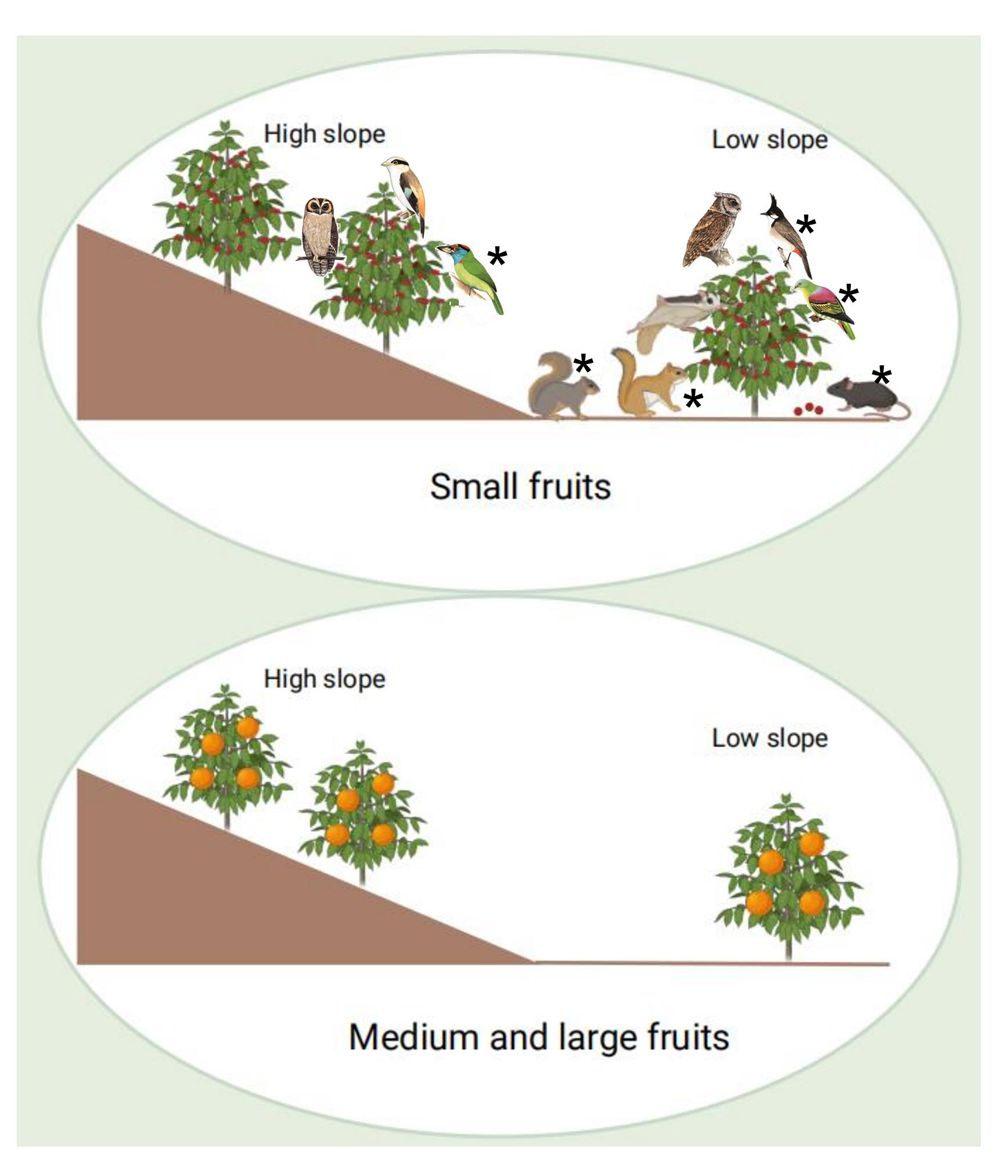In tropical rainforests, fruit is a vital food source for numerous birds and mammals. Food availability is a key factor influencing the spatial distribution of vertebrates. However, quantifying the relationships between key food resources and animal distribution in structurally complex tropical rainforest ecosystems has traditionally relied on time-consuming and labor-intensive methods, such as long-term observations and trap-based surveys.
In a study published in Molecular Ecology Resources, researchers from Xishuangbanna Tropical Botanical Garden (XTBG) of the Chinese Academy of Sciences and their collaborators utilized airborne environmental DNA (airborne eDNA) technology to demonstrate how fruit resources directly shape the distribution of fruit-eating animals (frugivores) in a tropical rainforest. It provided the first direct evidence that the fine-scale distribution of frugivores, including birds and mammals, is dynamically shaped by the availability of fruit resources, particularly from small-fruited trees.
The study was conducted in a 20-ha forest dynamics plot in Xishuangbanna.The researchers combined airborne environmental DNA sampling, which captures genetic materials suspended in the air, with comprehensive ground-based tree surveys.
Over six days and three rounds of sampling, the researchers detected a total of 89 terrestrial vertebrate species, including 71 bird species and 18 mammal species.
The results showed that the quantity of fruit-producing trees and the size of their fruits significantly influence the spatial distribution of frugivores. Areas richer in fruit resources showed a higher probability of presence for both fruit-eating birds and mammals. Specifically, the distribution of small-fruited trees (with fruit diameters less than 10 millimeters) was a key driver for the distribution of small birds and small mammals like squirrels. In contrast, the distribution of non-fruit-eating animal species showed no significant association with fruit resources.
“Airborne eDNA technology is not only an efficient tool for biodiversity monitoring, but it can also reveal fine-scale species interaction patterns. It allows us to simultaneously gather distribution data for multiple animal groups across large areas in a short time, effectively overcoming the limitations of traditional methods," said YANG Jie of XTBG.

Relationship between fruigivore distribution and fuit sizes. (Image by CAI Wang)
First published: 10 October 2025

